Schedule Variance (SV) in Earned Value Management
There are many tools and techniques used in project management to measure the performance of a project. One of the most popular tools used for this purpose is the Earned Value Analysis. This method allows the project team to measure the amount of work actually performed on a project in the correct way. While making performance measurements, Earned Value Analysis uses the following parameters: Schedule Performance Index (SPI), Cost Performance Index (CPI), Schedule Variance (SV), and Cost Variance (CV). In this article, we will analyze the Schedule Variance Formula and Example to provide you a better understanding to help you to pass the PMP Certification Exam.
Table of Contents
Earned Value Analysis (EVA)
In the simplest form, Earned Value Analysis (EVA) can be explained as in the following scenario:
You created a schedule to produce six machine parts this year. According to your plan, you will spend 100 hours producing each of them. Ten months have passed and five of the machine parts are produced. When you check the project’s performance with the project control team you see that you spent 300 hours producing 5 machine parts.
This simple example shows that you are in a good position considering the performance of your project. Because there is no delay in the project schedule and you spent fewer manhours than planned. Basically, Earned Value Analysis uses parameters to break down a project’s schedule and cost performance. Schedule Performance Index (SPI), Cost Performance Index (CPI), Schedule Variance (SV), and Cost Variance (CV) are the indicators of Earned Value Analysis (EVA) that enable to make mathematical calculations.
Schedule Variance (SV) in Earned Value Management
Schedule variance (SV) calculates the difference between the Earned Value (EV) (the value of work performed) and the planned value (PV). Although the variance in a schedule can be measured in time units, such as days and months, Schedule variance (SV) is expressed as a monetary value such as dollars.
SV is one of the essential outputs of Earned Value Management which informs the project teams how far ahead or behind the project is at the point of analysis.
Schedule Variance Formula
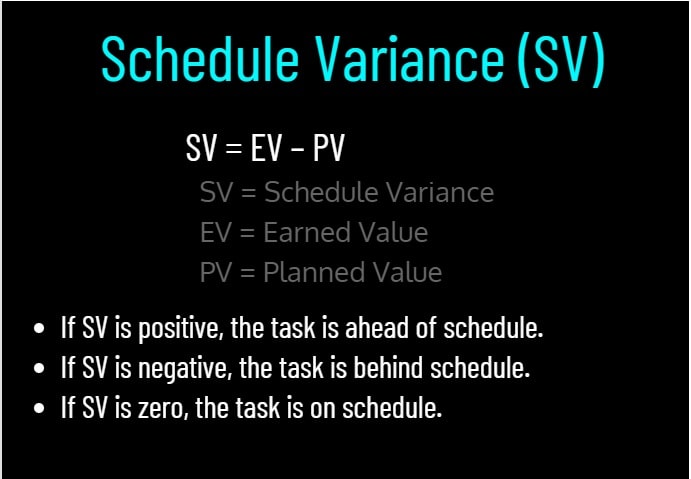
Below is the schedule variance formula;
SV = EV – PV
SV = Schedule Variance
EV = Earned Value
PV = Planned Value
Explanation of Results
If SV is positive, the task is ahead of schedule.
If SV is negative, the task is behind schedule.
If SV is zero, the task is on schedule.
Now, let’s analyze the examples below for a better understanding.
Schedule Variance Examples
Example 1
We have a project to be completed in 20 months and the budget of the project is 500,000 USD. 10 months have passed and 300,000 USD has been spent, but only 35% of the work has been completed so far.
Now we will calculate our project’s Schedule variance (SV) and understand if we are behind or ahead of our work schedule.
Planned Value (PV) = %50 * 500,000 = 250,000 USD
Earned Value (EV) = %35 * 500,000 = 175,000 USD
Actual Cost (AC) = 300,000 USD
Schedule Variance Formula: SV = EV – PV
SV = 175,000 – 250,000 = – 75,000 USD
Our project’s Schedule Variance is -75,000 USD and we are behind the schedule. Therefore, corrective action should be taken to reach the targets.
Example 2
We have a budgeted cost of a project at $700,000. The project is to be completed in 10 months. After a month, we have completed 10% of the project at a total expense of $150,000. The planned completion should have been 20%.
Planned Value (PV) = %20 * 700,000 = 140,000 USD
Earned Value (EV) = %10 * 700,000 = 70,000 USD
Actual Cost (AC) = 150,000 USD
SV = EV – PV
SV = 70,000 – 170,000 = – 70,000 USD
SV is negative and the project is behind the schedule.
Example 3
Assume that you have a construction project to be completed in 30 weeks. The estimated project budget is 450,000 USD. 10 weeks have passed and 180,000 USD has been spent on the construction works. However, only 20% of the project scope has been completed. Is your project behind or above the schedule?
Now we will calculate the project’s Schedule variance (SV)
Planned Value (PV) = (10/30) x 450,000 = 150,000 USD
Earned Value (EV) = %20 x 450,000 = 90,000 USD
Actual Cost (AC) = 180,000 USD
SV = EV – PV
SV = 90,000 – 150,000 = – 60,000 USD
The result of this example shows that your project’s Schedule Variance is -60,000 USD and you are behind the schedule. Therefore you must perform schedule analysis to understand the root cause of the delay.
Example 4
Assume that you are a project manager of a software development project. The project consists of 20 phases and all the phases must be completed in 20 weeks. The estimated project budget is 90,000 USD. 10 weeks have passed and 20,000 USD has been spent. Your team completed 14 phases. Is your project behind or above the schedule?
Now we will calculate the project’s SV
Planned Value (PV) = (10/20) x 90,000 = 45,000 USD
Earned Value (EV) = (14/20) x 90,000 = 63,000 USD
Actual Cost (AC) = 20,000 USD
SV = EV – PV
SV = 63,000 – 45,000 = 18,000 USD
In this example, your project’s Schedule variance (SV) is 18,000 USD. This positive value demonstrates that you are above the schedule. Your project’s performance is good.
Summary
Earned Value Management (EVA) allows the project team to make decisions related to the project’s performance by answering the following questions: Where are we now? and Where are we going? While answering these questions, the Earned Value Management System needs parameters such as the Schedule Variance (SV) and Schedule Performance Index (SPI).
Schedule Variance is a strong tool to inspect project performance. If the variance is negative we are behind the schedule and corrective action should be taken to reach the targets. If the variance is positive we can say that the progress of our project is well.
Note that this is a significant concept for the PMP Exam. Therefore you must understand the Earned Value Management Concept and its key aspects to pass the exam.
External Reference
Earned value management systems (EVMS)

I am a Civil Engineer in HES Consultancy Limited, experience as Director and Resident of Works and Technical, Financial and Administrative Project Audit. I have skills in the area of Procurement, Tenders and Contracting. I am PMP and PRINCE2 Certified. Monitoring and Control with the Earned Value Method.

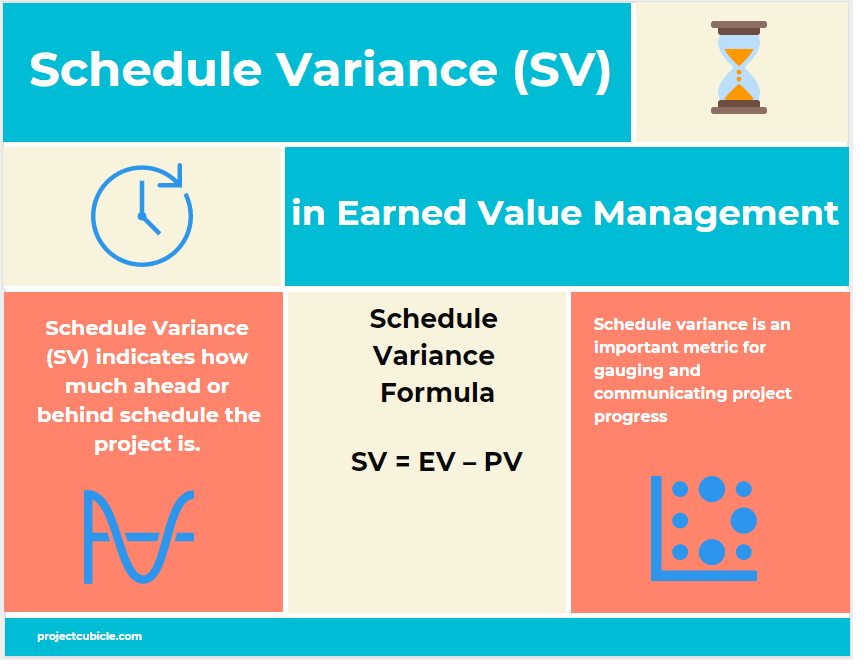
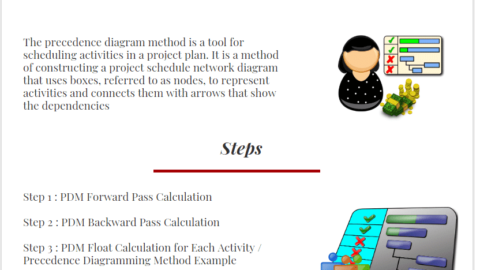

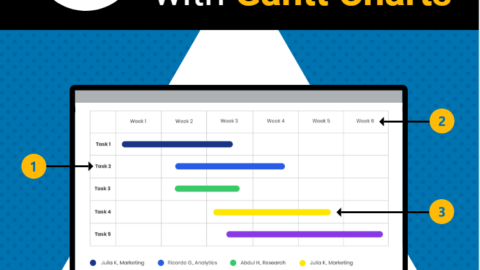

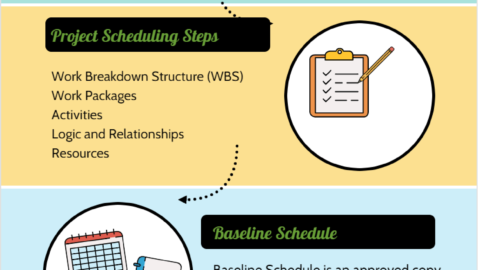
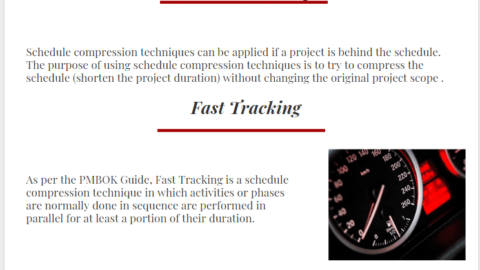
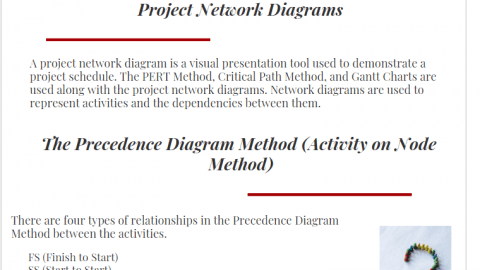


Very interesting info!Perfect just what I was looking for!